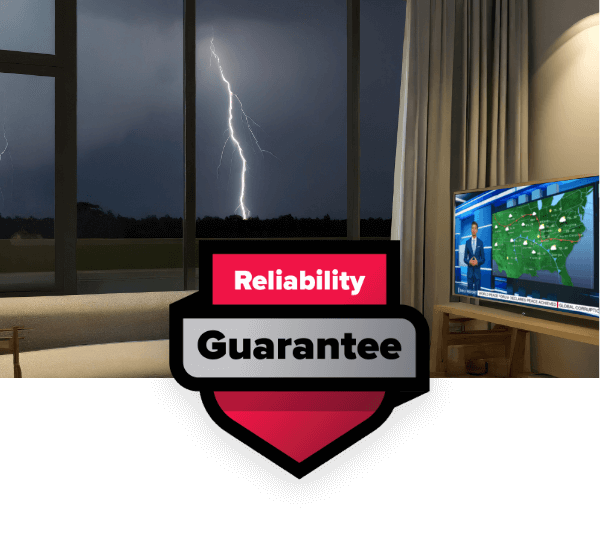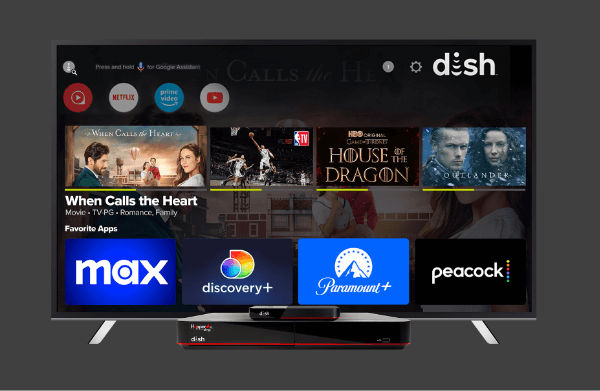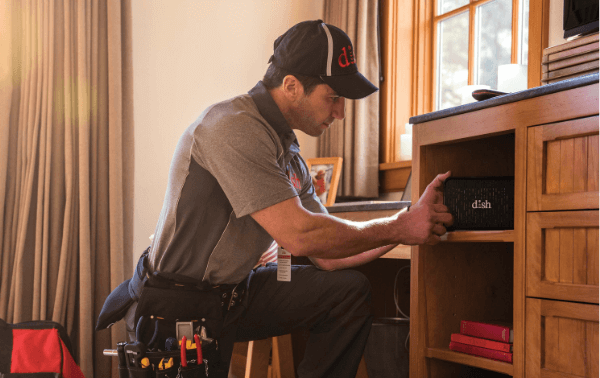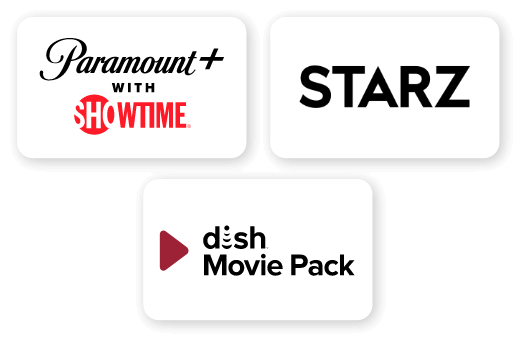How to Choose the Best Internet for Remote Work

Table of Contents
Having fast, dependable internet is essential for remote work success.
With good connectivity, your remote team can collaborate smoothly from locations all over the world. Without fast, stable internet, your video calls will freeze, and your file transfers will crawl.
Even when you’re not involved in active teamwork, internet outages or slowdowns can really hurt your productivity. Investing in the right internet plan will help you to shine in a remote job.
The Rise of Remote Work
The number of remote workers shot up during the COVID-19 pandemic, both in the USA and overseas. Ever since, remote work has been popular and common. More companies are embracing opportunities to hire remote talent, reduce real estate costs, and promote better work-life balance. Employees enjoy the flexibility to avoid long commutes and work from home full or part-time.
High-speed internet connectivity unlocks the full potential of this telecommuting revolution. If you’re considering remote work, you should carefully evaluate your internet requirements to make sure your home office runs smoothly. Reliable wireless networking throughout the home is also ideal for supporting multiple connected devices.
The Basics of Internet Connectivity
You will need to understand a few key internet terms if you want to find the best internet plan for remote work.
- Bandwidth refers to the maximum volume of data that can be transferred over a connection, measured in megabits per second (Mbps).
- Download speed indicates how fast you can pull data from the internet to your device, like loading web pages or streaming video. Download speed is also measured in Mbps.
- Upload speed measures how quickly you can send data from your device out to the internet, such as transferring files or video conferencing. Faster upload speeds improve real-time collaboration. And upload speeds are measured in—you guessed it!—Mbps.
- Latency refers to the time delay or lag between a request to load content from the internet and receiving the response. Lower latency results in snappier, more responsive connections.

Remote workers need high-speed internet
Types of Internet Connections
Broadband connections come in several technology types, each with their own strengths and limitations:
- Fiber-optic internet transmits data as light pulses along glass fiber cables. It offers by far the fastest speeds, highest bandwidth capacity, and lowest latency. However, fiber is primarily available in major metropolitan areas and at least 50% of U.S. households lack fiber internet access.
- DSL (Digital Subscriber Line) uses existing copper telephone lines to provide service. Speeds can vary widely based on your location and distance to a central office. Overall, DSL offers slower speeds at an affordable price point for general needs. Availability is much wider than fiber, but speeds can often be below broadband level.
- Cable internet utilizes the same coaxial cables used for cable TV service. It typically delivers fast download speeds but slower upload performance. Still, cable internet is now very fast and offere gigabit download speeds. Service levels depend on neighborhood usage congestion and on whether you have a hybrid fiber-coaxial network..
- Satellite internet beams signals to antennas from orbiting satellites. This wireless delivery can provide coverage to rural or remote areas unreached by terrestrial broadband. However, latency is much higher than wired options, which can hinder real-time applications.

Fiber internet is fastest
Evaluating Your Internet Needs
To choose your ideal internet speeds, think about your primary remote work activities and the number of devices and applications you use:
- Video calls and conferences using Zoom or Teams require minimum 5 Mbps download and 3 Mbps upload speeds for a high-quality connection. Though this is the recommendation from the Zoom site, actual users to find it works much better to have true broadband speed, or 25 Mbps download/3 Mbps upload even for one Zoom connection.
- Transferring large files may need 10 Mbps upload speed or higher, especially if uploading media content.
- Streaming movies and videos consume 4-5 Mbps per stream for standard definition quality, up to 25+ Mbps per stream for ultra HD 4K resolution.
- Smart home devices like security cameras and voice assistants each require 2-5 Mbps when active. You may have dozens of connected devices.
These speeds may sound low, but remember that you need to account for multiple users and devices connected and in use at the same time.
As a general tip, be aware that if you can get a cable or fiber plan that is at least 100 Mbps download/20 Mbps upload, you will be well equipped for most jobs.
But you can get away with less speed than the ideal 100/20 plan.
Many internet users can only get DSL or satellite, both of which will frequently be limited to lower speeds. To find your real minimum speed requirements, try to estimate your household’s internet needs with all your devices connected. That will give you a good idea whether your local speeds can support remote work.
Also remember that some types of remote work don’t require the high speeds of videoconferencing or video uploads. For example, many types of remote work are primarily audio calls. Audio requires less bandwidth than video. So, some companies will state a requirement such as 10 Mbps download/5 Mbps upload speed. DISH requires 25 Mbps download, 2 Mbps upload for its remote customer service jobs.

Streaming is data-intensive
Fiber Internet for Remote Work
If fiber optic internet is available in your area, strongly consider choosing it for reliable high performance. Fiber offers nearly unlimited bandwidth potential through newer fiber-to-the-premises (FTTP) architecture. This translates to the fastest speeds and lowest latency of any connection type.
Latency is especially important for video conferencing, online gaming, and other real-time applications. The faster response times of fiber will minimize lags, freezes, and interruptions during calls. Fiber also provides plenty of capacity to prevent slowdowns when multiple users are active.
The one downside of fiber is limited availability in many regions. Deployment is concentrated in major metro areas, with gaps in suburban and rural coverage. You may have only one or two fiber providers to choose from based on location. Pricing is competitive but fiber plans are pricier than DSL or cable. Still, fiber is the top choice for performance if available where you live.
DSL and Cable Internet Options
For remote workers without access to fiber, DSL and cable internet remain viable options. DSL uses telephone lines so is generally more widely available than fiber or cable internet. Speeds range from 10-100+ Mbps download and 1-20 Mbps upload. Latency is moderately low but reliability can vary.
Overall DSL offers a good balance of affordability and performance for general telecommuting needs like email, document sharing, web meetings, and moderate media streaming. Just don’t expect ultra-high speeds. Shop plans from regional and national DSL providers.
Cable internet is faster than DSL, with download speeds up to 200+ Mbps through newer DOCSIS 3.1 cable modems. However, upload speeds lag behind at just 5-20 Mbps typically. This asymmetric performance makes cable better suited for entertainment purposes than live remote collaboration. If fiber is unavailable, DSL may be a better option for work needs.

DSL speeds vary
Satellite Internet
Satellite internet provides coverage to rural and remote regions beyond the reach of terrestrial broadband networks. Download speeds can reach 100 Mbps or more with new high-throughput satellites. But latency remains much higher than wired internet due to the physical distances involved.
This latency can hinder real-time video collaboration. Overall, satellite internet is fine for less latency-sensitive work like email and documentation. But those relying heavily on video chat should try wired options first if available.
Also, be aware that some companies that hire remote customer service reps will require a wired internet connection. These employers will only allow fiber, cable, or DSL if you want to qualify for their workforce. In many cases, these large companies will also require you to plug directly into your internet connection with an ethernet cable to avoid using Wi-Fi.
Tips for Improving Your Current Setup
Is your speed too slow at home? Before switching providers, try optimizing your current home network setup:
- Connect devices directly to the router with ethernet cables to reduce interference and congestion.
- Inspect all ethernet cables, connectors, splitters etc. for damage which can impair speeds.
- Reboot your modem and router periodically to clear temporary glitches or bottlenecks.
- Evaluate your router’s location to make sure you’re getting the best signal throughout your interior space. If you have weak spots or dead zones, think about a mesh router system.
Minor upgrades like these can boost performance of even the most basic internet plans. But if our speed test still shows your connection lagging well below the advertised speeds, contact your provider about technical issues before changing plans.
Internet Security for Remote Workers
Cybersecurity should be a priority for remote employees accessing company systems and data from home. Use a virtual private network (VPN) when connecting to create an encrypted tunnel protecting information.
Install endpoint antivirus software as well as a firewall for your network. Be vigilant against phishing emails and texts attempting to steal login credentials. Enable multi-factor authentication (MFA) for an added layer of protection on accounts. A secure home setup is crucial for remote work.

Comparing Providers
When choosing a new internet service provider, compare factors like:
- Service availability for your location
- Speed tiers, pricing, and value
- Data caps and overage fees
- Required contracts and commitment terms
- Activation and equipment fees
- Customer service reputation and reliability
Our staff reviews here at CompareInternet.com will go over all of these details. Look at the navigation button at the top of this page that says “Providers” to see a drop-down window of all the review. But if you don’t know yet who offers internet in your area, start by entering your zip code here on the site to get a detailed list of plans and prices.
Dealing with Connectivity Problems
Even reliable internet connections can go through occasional hiccups.
Try rebooting your modem and router and check cable connections if speeds seem slow. Be aware of ongoing issues like frequent disruptions or slowdowns at peak times. Contact your provider’s tech support team for troubleshooting.
Be prepared to escalate your case to management if problems continue unresolved. Switch providers if your service cannot be stabilized.
The Future of Remote Work Connectivity
Ongoing technology improvements promise faster speeds, expanded access, and new applications.
- 5G and 6G cellular networks will enable more mobile work flexibility.
- Satellite innovation continues to increase speeds and reduce latency.
- Wi-Fi 6E optimizes wireless performance for dense smart home environments.
- VR and AR may transform remote collaboration in the coming years.
We can’t predict everything that is coming down the pike given the dizzying speed of digital innovation. But there are two things we can all be sure of.
First, faster internet speeds are spreading all over the country with federal programs like BEAD to encourage rural infrastructure building.
Second, faster internet speeds will be crucial to fully participate in the digital world that many of us now spend our work lives in.

Frequently Asked Questions
How much speed do I need for video conferencing?
For smooth video calls, aim for at least 25 Mbps download and 3 Mbps upload speeds. The more users on a call, the more bandwidth needed. If you have trouble with glitching, turning off the video and just using audio can help.
Is satellite internet good for remote work?
Satellite has high latency that can disrupt real-time apps. Fiber or DSL would be better options for frequent video calls. Some companies forbid the use of satellite or fixed wireless connections for their customer service reps. That may change as satellite technology continues to advance.
What download speed is recommended for 4K streaming?
To stream UHD 4K video content without buffering, you’ll want a minimum of 25 Mbps download speed, with 50+ Mbps ideal.
How many devices can use Wi-Fi at once?
Most of today’s routers can handle 10-20 connected devices, but active use of multiple devices will be limited based on your bandwidth.
What is the most reliable type of internet connection?
Fiber internet offers the fastest speeds and lowest latency for maximum uptime.






 Call
Call 

 Access Your Account
Access Your Account